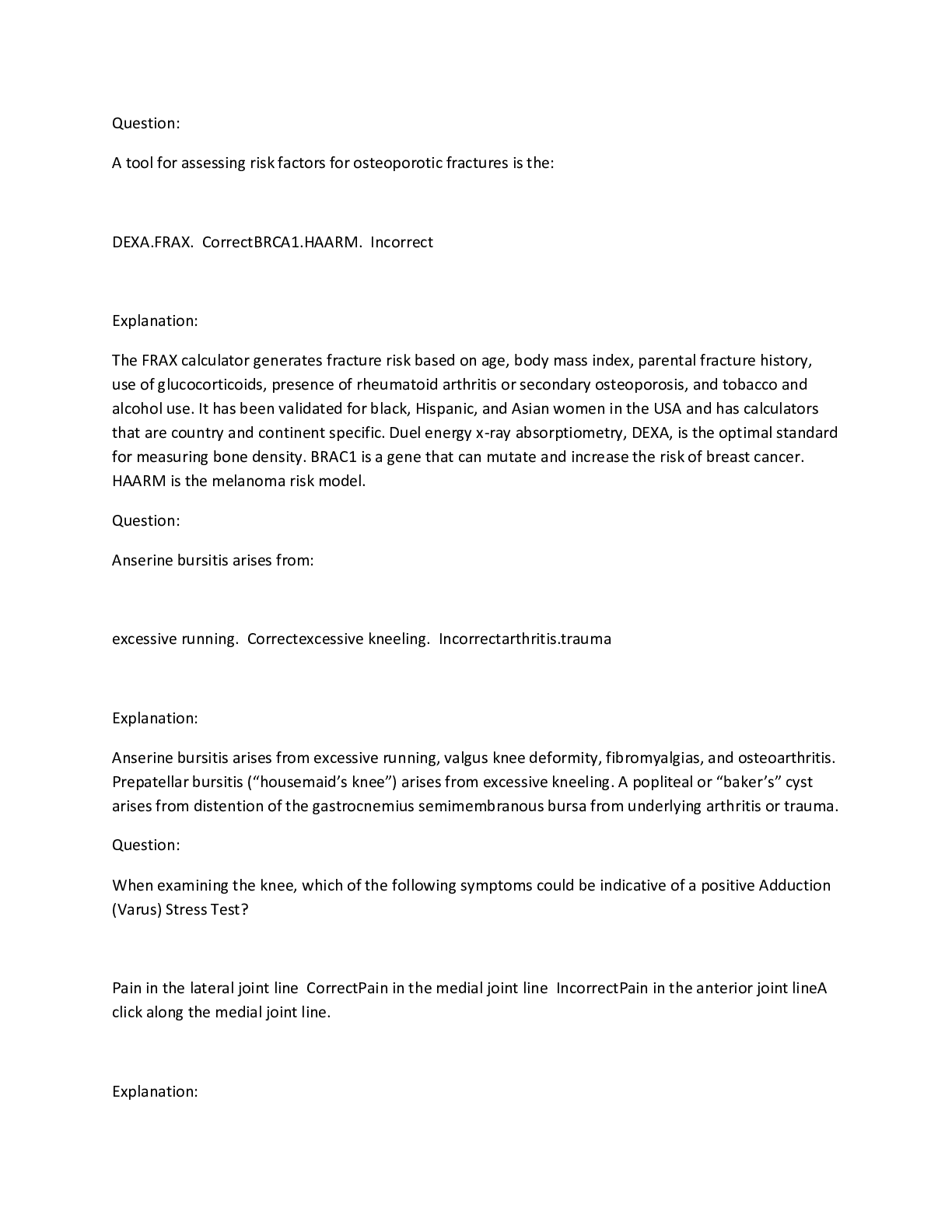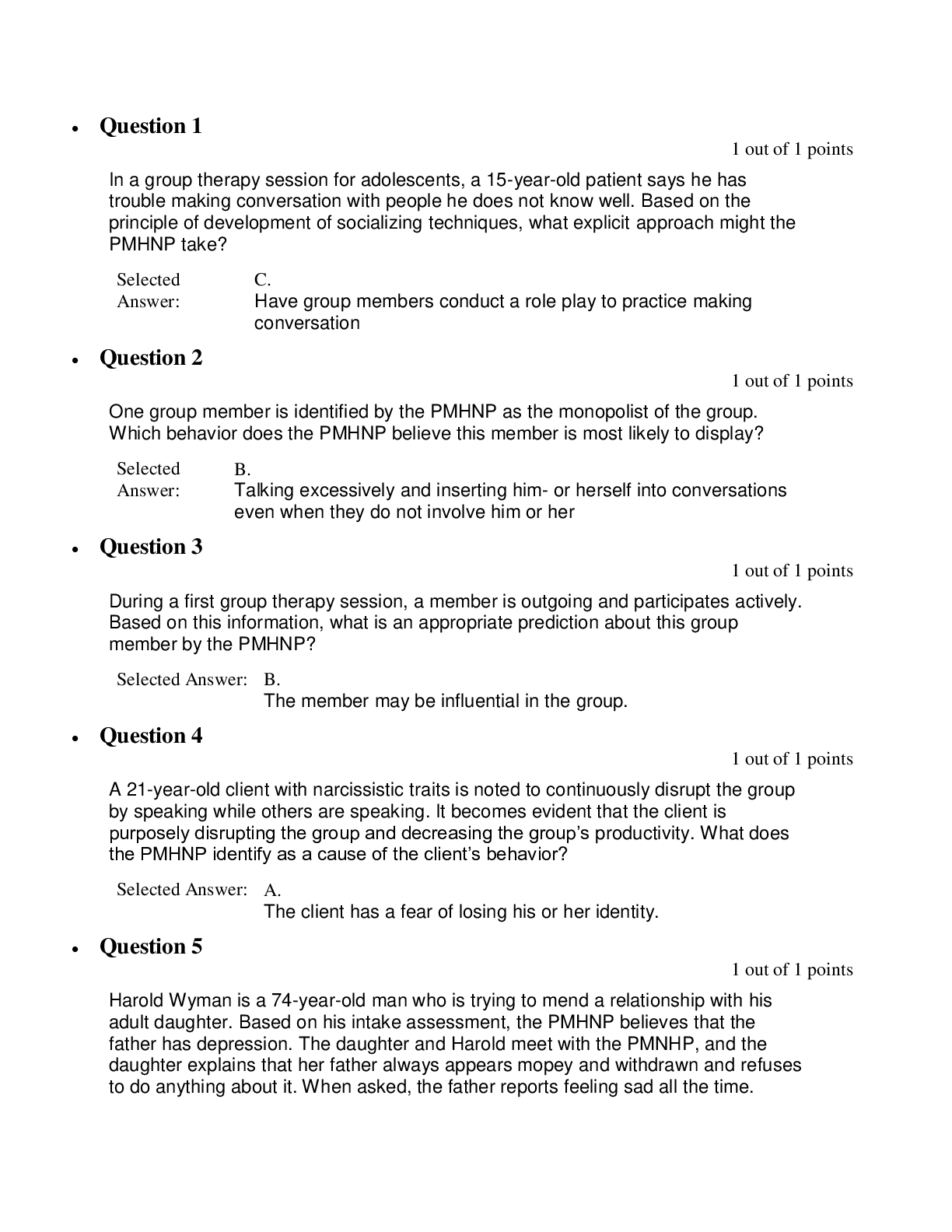Health Care > EXAM > NCLEX Test Taking Strategy Questions And Answers With Rationale. (All)
NCLEX Test Taking Strategy Questions And Answers With Rationale.
Document Content and Description Below
NCLEX Test Taking Strategy Questions 1. The nurse is providing post-operative care to a craniotomy client. Diabetes insipidus is suspected when the client’s urine output suddenly increases signifi... cantly. Which action takes highest priority? o 1. Monitoring urine output o 2. Checking pulse o 3. Checking blood pressure o 4. Assessing level of consciousness Rationale: 3. Correct: This is the best answer because we are “worried” this client is going into SHOCK. So…..you better be checking a BP. This is a time where checking the BP is appropriate. If we “assume the worst” I better check a blood pressure. It could have dropped out the bottom. 1. Incorrect: Continuing to monitor U/O is important but I need to find out if they are already shocky. 2. Incorrect: Checking the pulse is a good thing, but, not as important as checking the BP. 4. Incorrect: If my client is going into shock the highest priority is to assess the BP. 2. The client is being treated for fluid volume deficit. Which is an expected outcome of successful treatment? o 1. Resolution of orthostatic hypotension o 2. Maintenance of weight loss o 3. Compliance with sodium restricted diet o 4. Maintenance of serum Na above 148 mEq Rationale: 1. Correct: When you are in a fluid volume deficit your blood pressure goes down when you stand up and it’s called orthostatic hypotension. Successful treatment would resolve this. 2. Incorrect: When I have lost a lot of volume, my weight goes down, so if I am better, my weight should go up. 3. Incorrect: Who needs to adhere to dietary sodium restrictions? People who are in fluid volume excess. 4. Incorrect: If your serum sodium is above 148, hypernatremia is the same thing as dehydration, so this means that you are still sick. 2 Day 4 3. The nurse in the intensive care unit is caring for a client receiving hemodynamic monitoring. When planning for a client’s care, which nursing diagnoses associated with hemodynamic monitoring may be utilized by the nurse? Select all that apply. F 1. Decreased cardiac output F 2. Fluid volume deficit F 3. Fluid volume excess F 4. Ineffective tissue perfusion F 5. Ineffective airway Rationale: 1., 2., 3. & 4. Correct: Nursing diagnoses, associated with hemodynamic monitoring, that may be utilized by the nurse include decreased cardiac output, fluid volume deficit, fluid volume excess, and ineffective tissue perfusion. These nursing diagnoses relate to the pathophysiologic processes that alter one of the four hemodynamic mechanisms that support normal cardiovascular function: preload, afterload, heart rate, and contractility. 5. Incorrect: Ineffective Airway would not be associated with hemodynamic monitoring. 4. The nurse is caring for a client that has two IV access sites. One is a 20 gauge antecubital peripheral IV that was started yesterday for blood and has normal saline (NS) at keep vein open rate. The other is a double lumen central line catheter with one port for Total Parental Nutrition and the other is used for blood samples. Where is the best site for the nurse to administer 20 mEq of potassium chloride (KCL) in 100 mL of normal saline(NS) over 4 hours? o 1. Central line port that is being used for lab draws o 2. Same line with the Total Parental Nutrition o 3. Large bore antecubital o 4. Start another peripheral IV Rationale: 1. Correct: Yes- K is very hard on the veins, give it through the central line. 2. Incorrect: No, never put anything through a line with Total Parental Nutrition. 3. Incorrect: Second best choice- but it will burn. 4. Incorrect: No, a central line is needed. Day 4 3 5. The nurse is caring for a client that has metabolic acidosis secondary to acute renal failure. What is the initial client response to this problem? o 1. Respiratory rate increases to blow off acid. o 2. Respiratory rate decreases to conserve acid and buffer the kidneys response. o 3. Kidneys will excrete hydrogen and retain bicarb. o 4. Sodium will shift to cells and buffer the hydrogens. Rationale: 1. Correct: Yes, acute renal failure causes metabolic acidosis and the body is trying to breathe faster to blow off some acid. The respiratory response is fast. 2. Incorrect: No, the client’s respiratory rate is fast, not slow. 3. Incorrect: This will happen, later. Did not we say about 48 hours? Not initial response. 4. Incorrect: Sodium is extracellular electrolyte, not an intracellular electrolyte. [Show More]
Last updated: 2 years ago
Preview 1 out of 35 pages

Buy this document to get the full access instantly
Instant Download Access after purchase
Buy NowInstant download
We Accept:

Reviews( 0 )
$17.00
Can't find what you want? Try our AI powered Search
Document information
Connected school, study & course
About the document
Uploaded On
Jul 15, 2021
Number of pages
35
Written in
Additional information
This document has been written for:
Uploaded
Jul 15, 2021
Downloads
0
Views
89


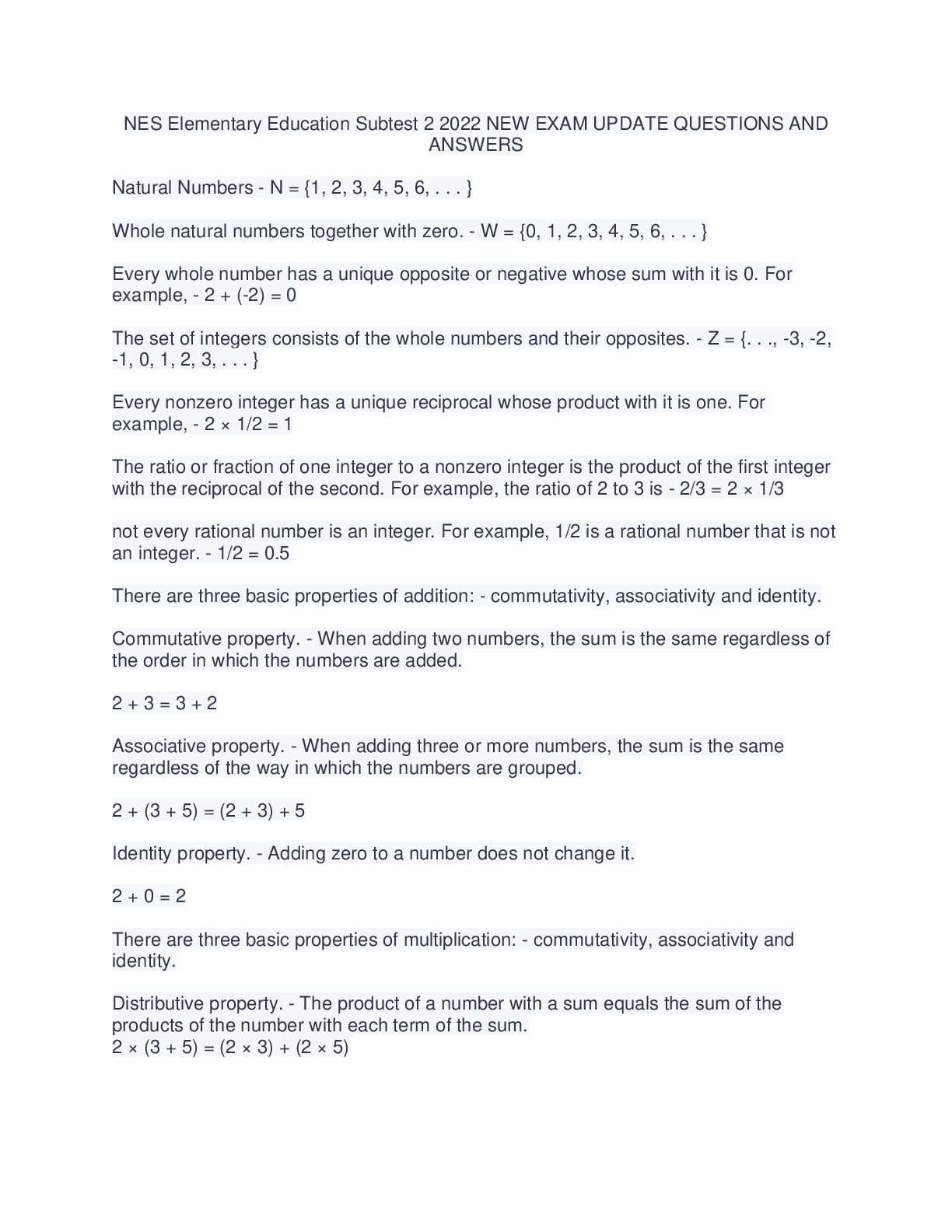
.png)

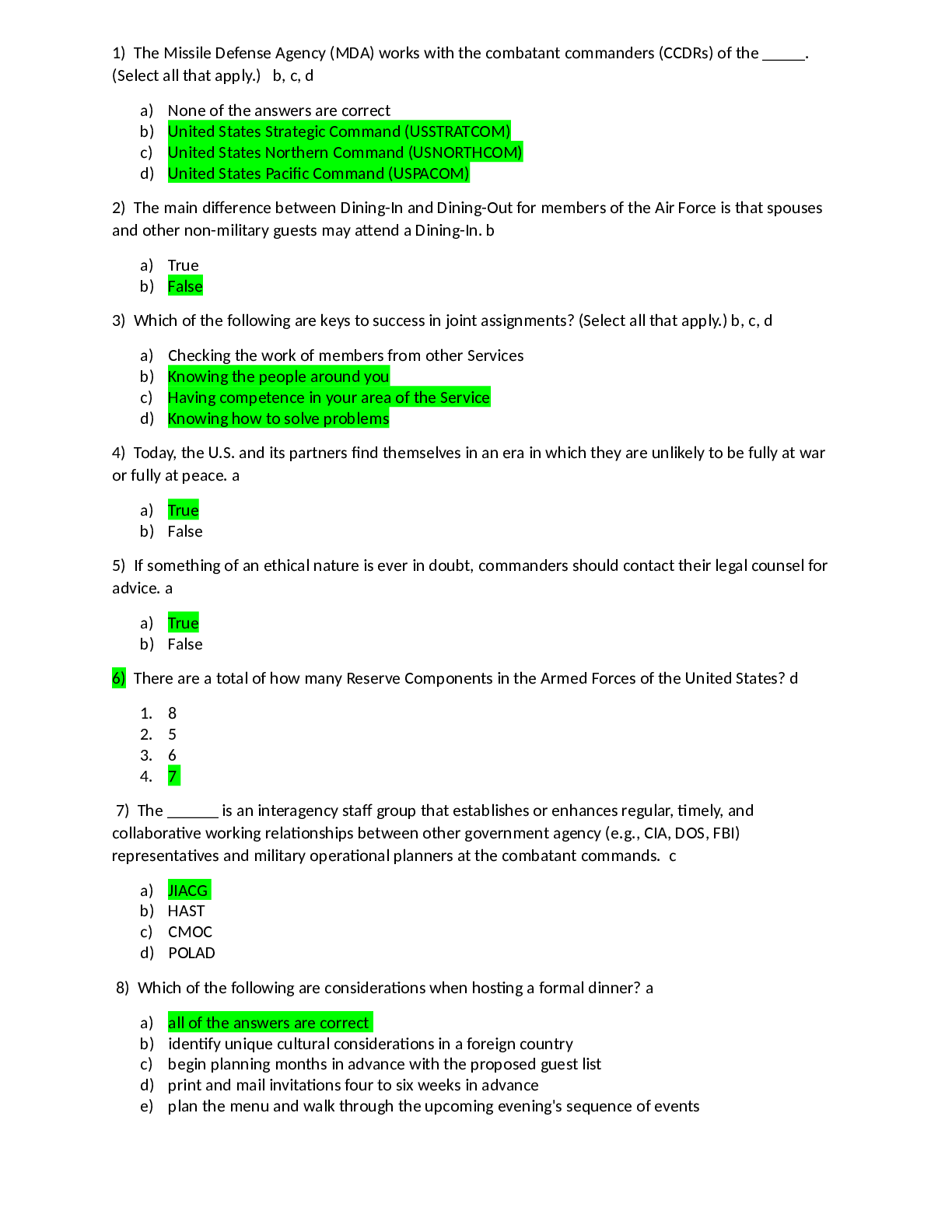
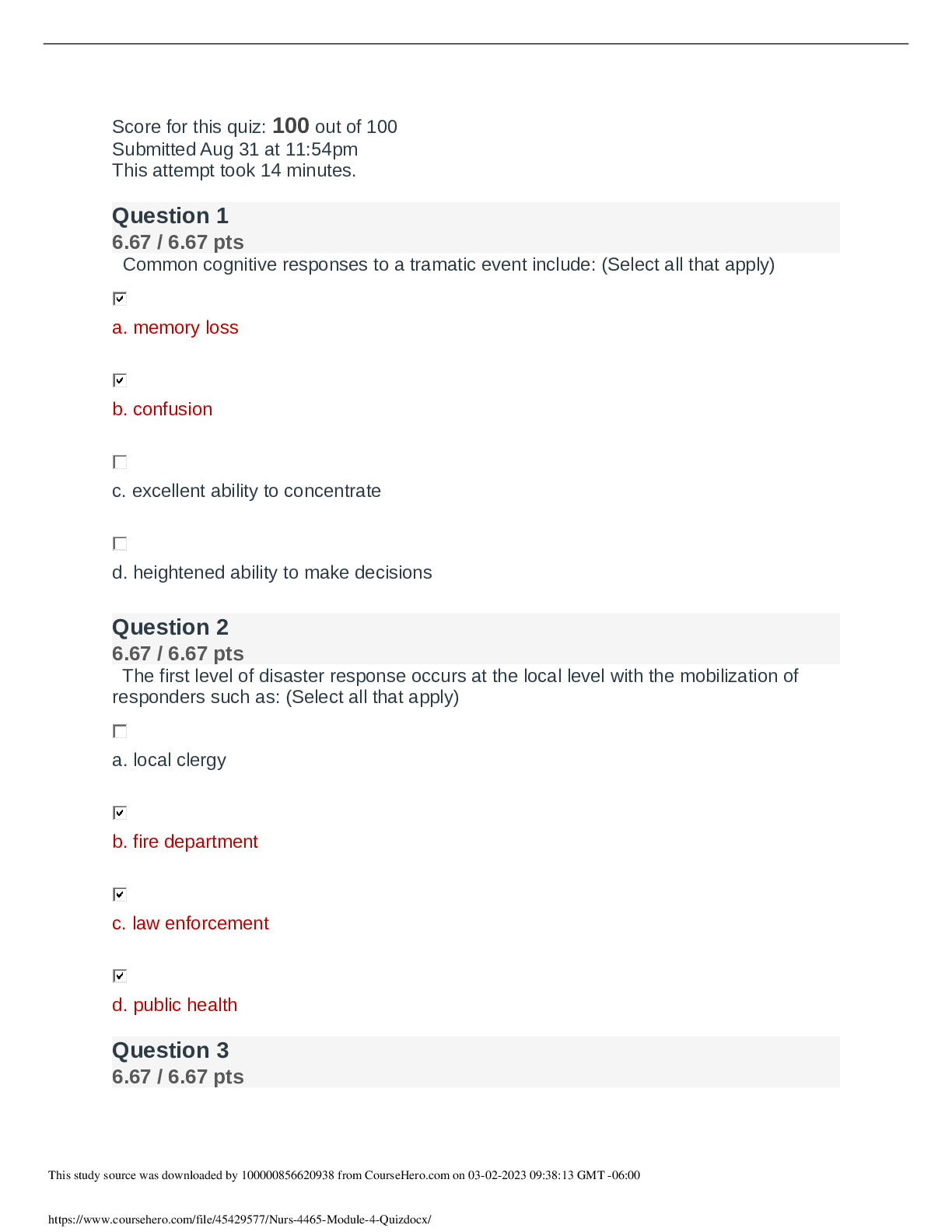
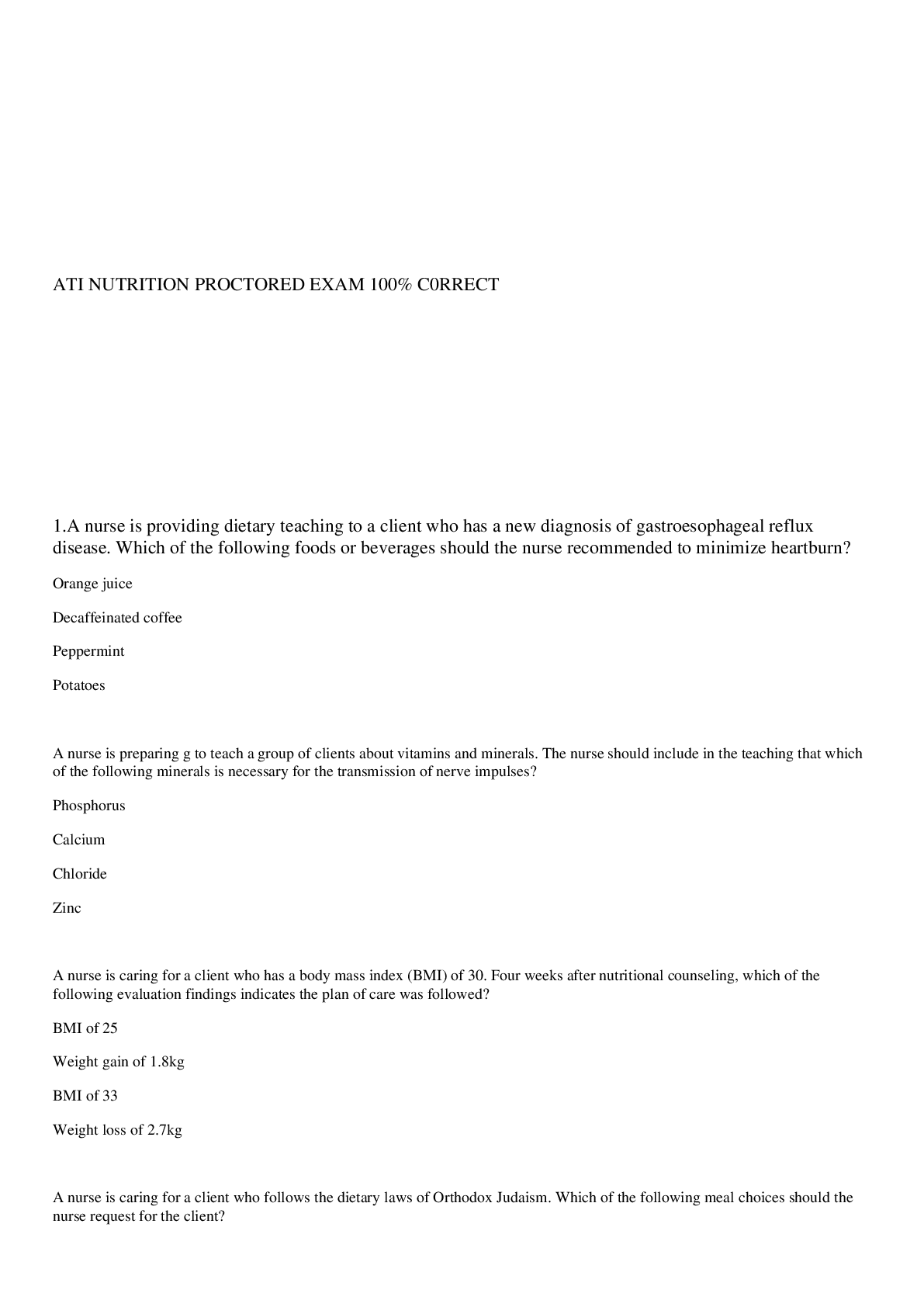
.png)
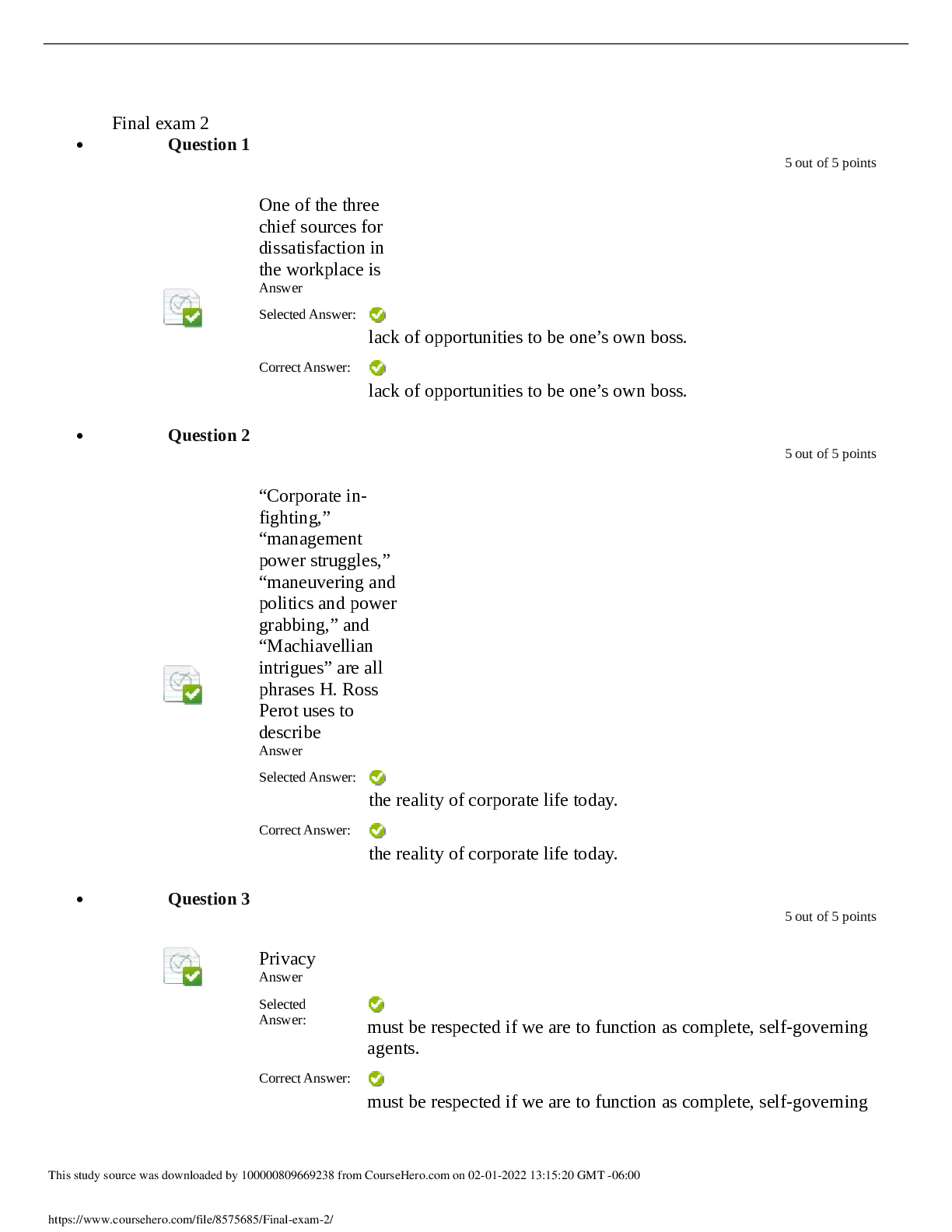
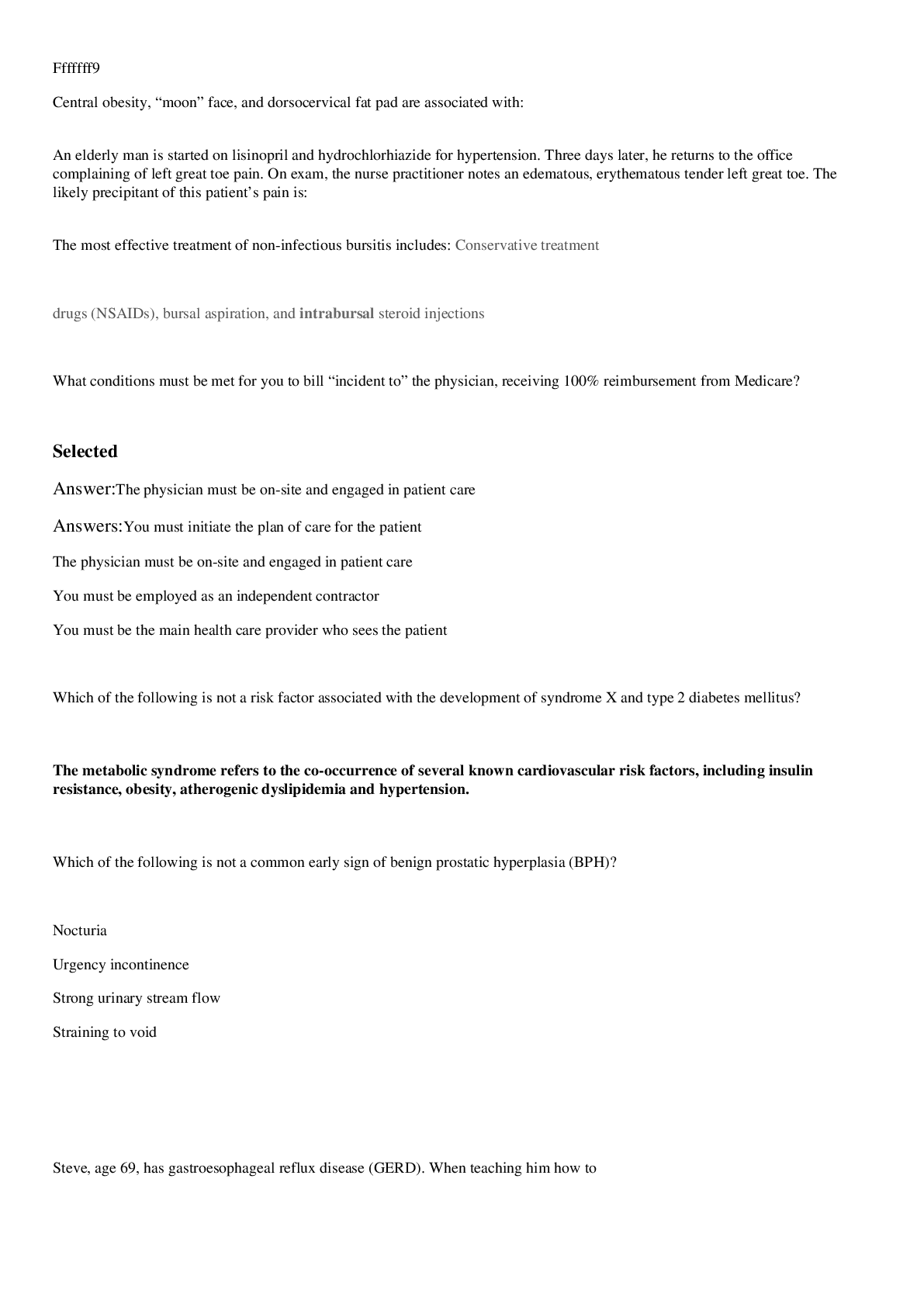
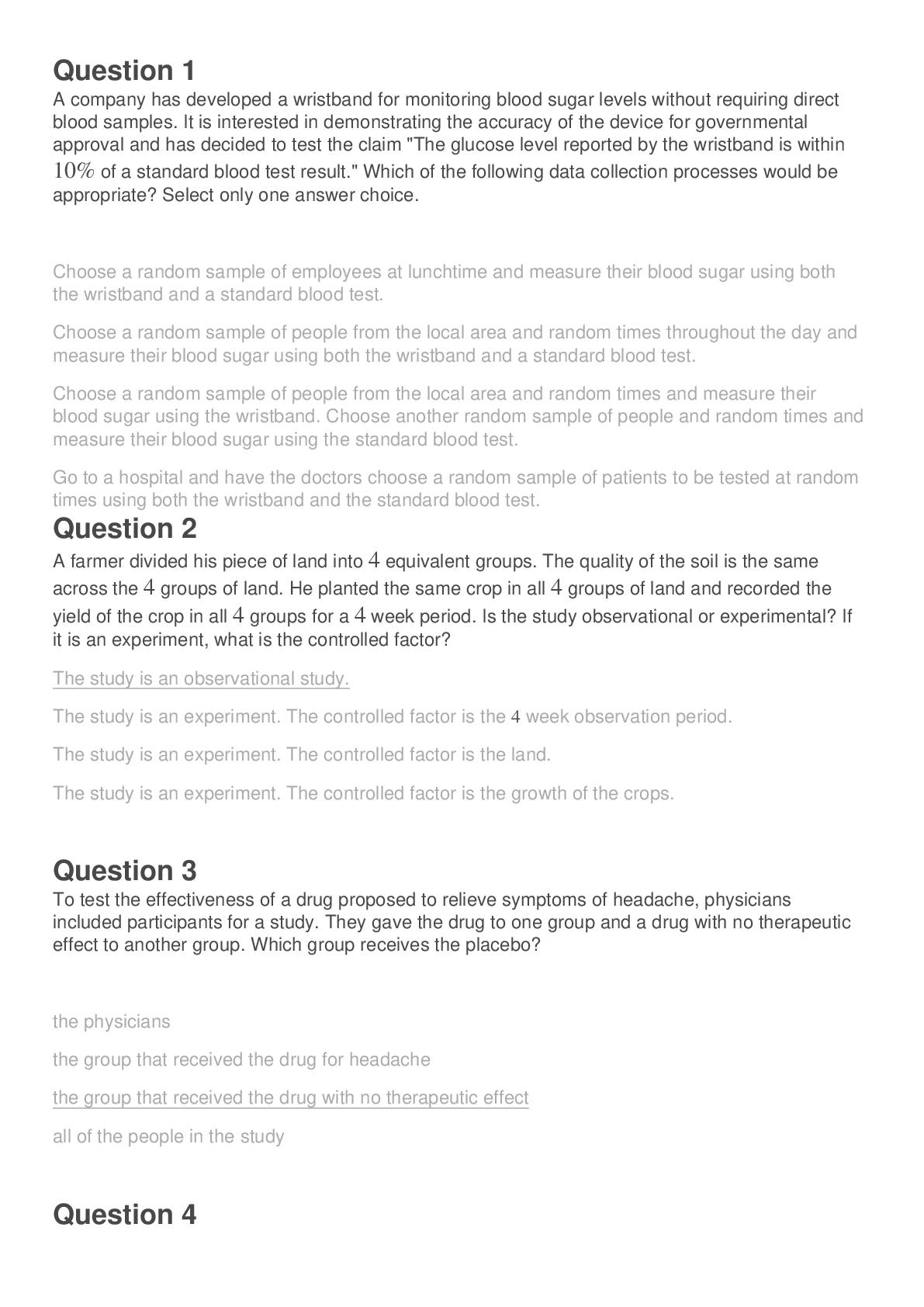
.png)






